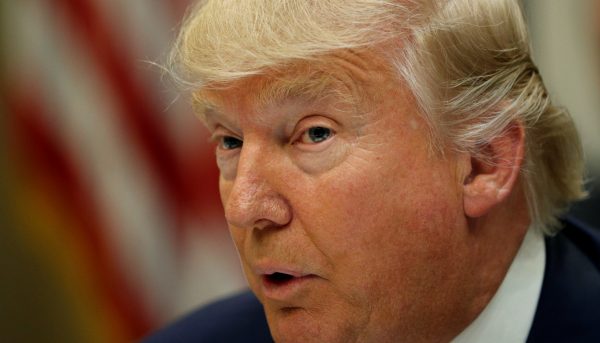The US withdrawal from the TPP is a major setback to international efforts to foster freer regional trade and investment in the Pacific Rim. It is also a significant dilution of the previous Obama administration’s ‘pivot’ to Asia strategy. The Trump administration is likely to favour bilateral trade deals over regional or multilateral blocs, which will have significant ramifications for its trading partners.
One crucial drawback in having multiple bilateral trade agreements compared to entering regional or multilateral trade deals is the additional costs incurred to the business sector from complying to different rules of origin. This concern has underwritten the argument for regional and global trade regimes that govern international flows of goods and services through unified rules and standards.
Regional trade regimes that allow cumulative rules of origin — which allows countries to share production with others in complying with relevant rules of origin provisions — can also facilitate value chains among contracting parties. This expands the scope for an international division of labour. Bilateral trade deals will not be able to replicate these gains.
There’s also debate about the breadth and depth these two options offer vis-à-vis trade and investment liberalisation. While regional and global trade regimes can expand the coverage of countries involved — and in turn the scope of trade and investments flows governed — the degree of liberalisation could be lighter given that multiple economies are involved in laying the common ground. On the other hand, bilateral trade agreements can aim for deeper and broader liberalisation by focusing on mutual interests during the bargaining process.
Another issue to consider is that multiple bilateral trade agreements are likely to bring about changes to the structure of existing global and regional value chains. As intermediate goods providers along the supply chain, Canada, Mexico and China seem to have relatively deep value chain linkages with the US, according to a value chain analysis based on the Asian Development Bank’s 2015 Multi-Regional Input-Output data. Yet the three countries have become the major target of trade friction or rule renegotiation pushing by the Trump administration. The deeper the value chain linkages, the larger the reciprocal pinch to be felt by producers in the case of higher trade barriers.
Viewed from this perspective, it is less clear which option serves the global economy better. First, let’s assume that deeper liberalisation in trade deals with the US becomes the benchmark, prompting a virtuous cycle of liberalisation efforts worldwide. If the pursuit of bilateral trade deals culminates in deeper trade and investment liberalisation overall, the gains might outweigh the costs of ‘noodle bowl’ syndrome and at least partially offset the disruptive impact to current global and regional value chains. One can imagine a firm facing higher fixed costs from complying with different rules of origin, but enjoying much lower tariff and non-tariff barriers due to stringent bilateral norms.
Strong bilateral pushes for liberalisation would certainly shrink the trade surpluses of export-oriented Asian countries, lowering the contribution of net exports to their economic growth. But lower trade barriers could yield economic gains by stoking competition in the domestic market and expanding consumer surpluses. The end result of all these changes remains to be seen.
Nor is it accurate to call the US withdrawal from regional trade blocs protectionism. If the US push for bilateral trade deals aims for higher market access to partners without raising its own trade barriers, this is closer to aggressive liberalism. More worrying signs of growing protectionism can be seen in US attempts to raise its own trade barriers, indirectly through border adjustment taxes and more directly through punitive country or industry level import tariffs. For these taxes or import tariffs to yield intended results of import substitution, the rates should be high enough to close the gap in production costs between domestic and foreign producers.
Yet, penalising imports will not only hurt retailers but also manufacturers who rely on imported parts and components, and of course general consumers who will suffer higher prices of goods and services in the US. This will not only cause inefficient resource allocation across borders but also weaken the competitiveness of protected US industries. A stronger US dollar resulting from export support and import penalisation also may eventually offset the impact of import suppression, neutering the intended policy effect.
Even worse is when unilateral trade policy tools such as trade remedies are engaged beyond the purpose of levelling the playing field. This can escalate into mutual retaliation and even trade wars, where no party wins. If history is any guide though, protectionism comes and goes. The rising tide of protectionism will recede eventually, and if we are fortunate the damage done will be manageable, if not fully reversible.
Jong Woo Kang is a Principal Economist at the Economic Research and Cooperation Department of the Asian Development Bank.
This article was originally published here on Asian Development Blog of the ADB.


I think it is about time the USA restored its former high tariff barriers that were in place before Reagan slashed them to nothing. The other countries in Europe and Asia have not reduced their tariff barrier rates for the last 37 years.
“….this will not only cause inefficient resource allocation across borders but also weaken the competitiveness of protected US industries. A stronger US dollar resulting from export support and import penalisation also may eventually offset the impact of import suppression, neutering the intended policy effect.”
The competitiveness of the USA industries has been weakened due to the vastly reduced tariff barriers since you have Americans like Trump and Gates profiting off the reduced tariff barriers since they have sent their industries overseas and are shipping their products back into the USA.